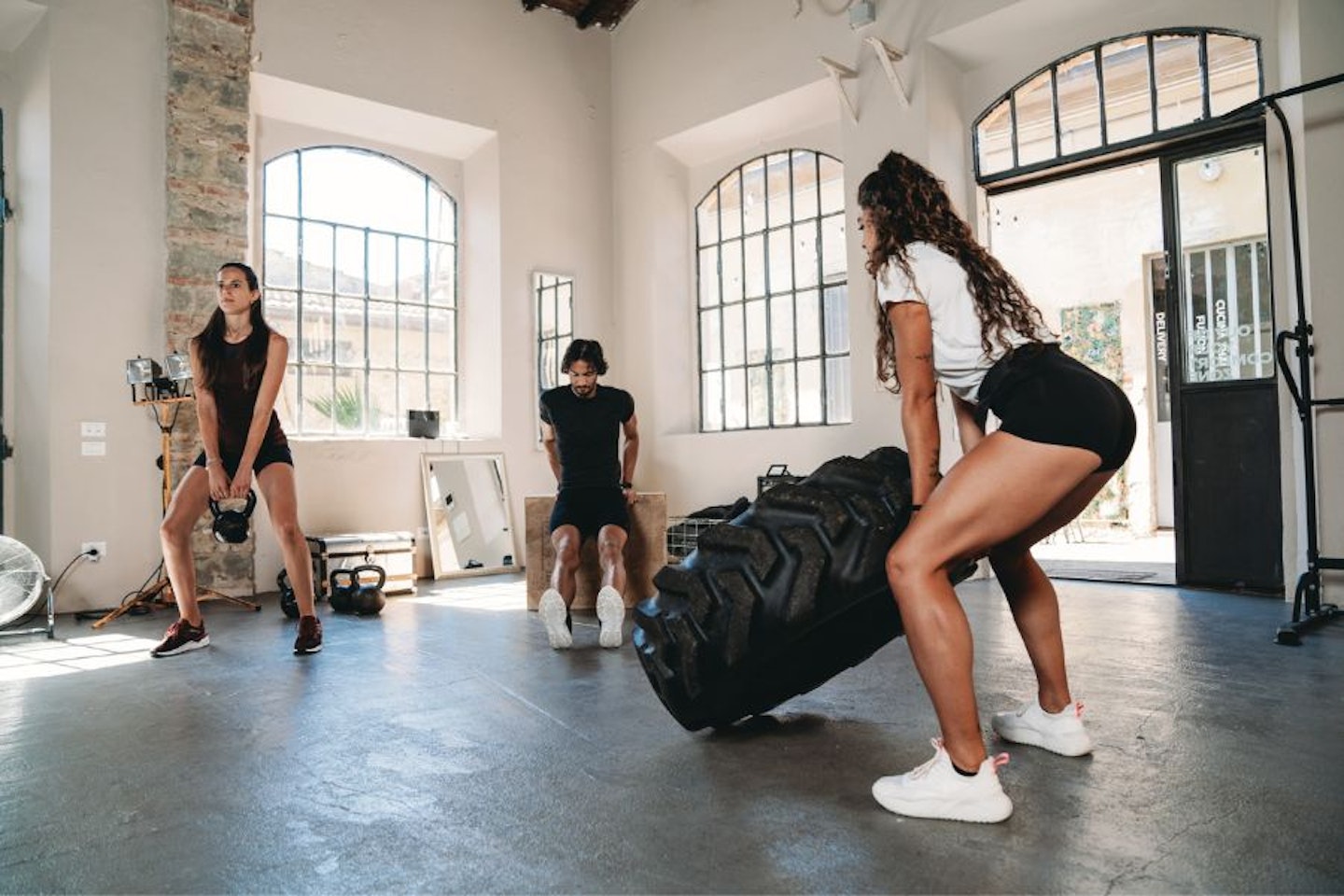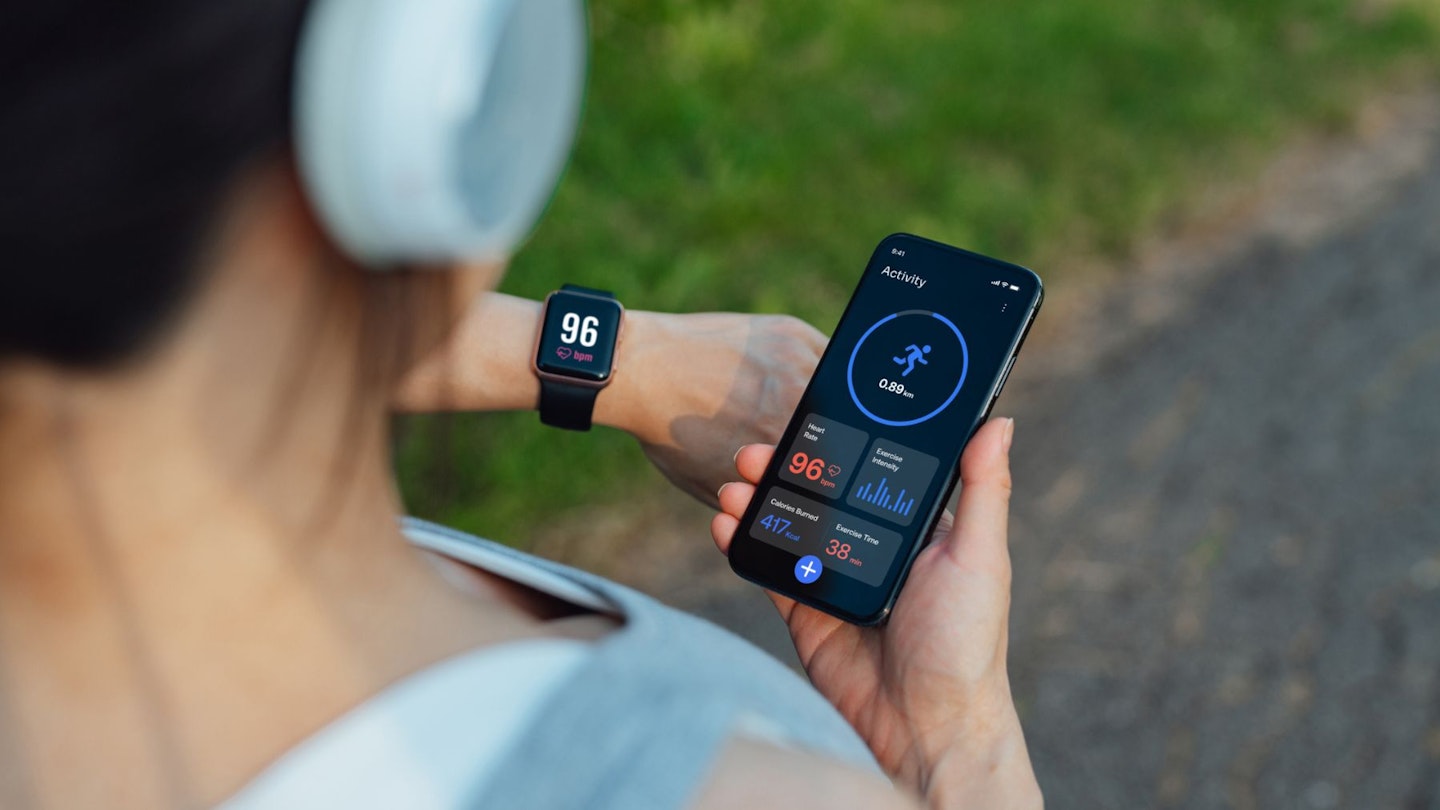Your VO2 max is a metric you might be familiar with if you own a fitness tracker or Apple Watch. You're probably used to seeing it alongside statistics like steps, heart rate and sleep.
Although VO2 sounds like an element in the periodic table, what is it actually? We're here, with the help of the Co-Director of The Fitness Group, the UK's leading personal training course provider, to demystify VO2 max and understand why it's key in unlocking your full athletic potential.
What is VO2 max?
Think of your VO2 max as your body's capacity to act as an efficient engine, utilising oxygen to burn fuel (calories), during demanding physical workouts. The higher your VO2 max, the more effectively your engine can churn out energy. This will allow you to push your limits and increase your performance. Steven Dick, Co-Director and PT from The Fitness Group, continues:
"VO2 max, or maximal oxygen consumption, is a measure of the maximum amount of oxygen that an individual can utilise during intense exercise. It is often expressed as millilitres of oxygen per kilogram of body weight per minute (ml/kg/min). VO2 max is considered a key indicator of cardiovascular fitness and aerobic endurance. The higher the VO2 max, the more efficiently your body can transport and use oxygen during physical activity."
What should my VO2 max be?
The ideal VO2 max is as unique as your fingerprint, and there definitely isn't a one-size-fits-all answer. Although some benchmarks exist, Steven comments, "the ideal or "normal" VO2 max can vary based on factors such as age, sex, and fitness level. Generally, a higher VO2 max is associated with better cardiovascular fitness. For adults, average values typically range from 30 to 60 ml/kg/min. However, what is considered good or excellent can depend on individual goals, age, and other health considerations. Elite athletes often have VO2 max values well above average and higher than 70 ml/kg/min."
But, it's not just about elite athletes, it's about YOU. Focus on improving your own VO2 max over time. Progress, after all, is the true measure of success in the pursuit of a healthier lifestyle.
How can I improve my VO2 max?
Improving your VO2 max means turning up the volume on your current workout regime. Get involved with regular aerobic exercise to challenge and strengthen your cardiovascular system. To enhance your VO2 max, Steven recommends some of the following:
"Cardiovascular exercise - Engage in activities that elevate your heart rate and challenge your cardiovascular system, such as road running, cycling, swimming, or rowing.
"High-Intensity Interval Training (HIIT) - Incorporate HIIT training into your workouts. Alternating between short bursts of intense exercise and periods of lower-intensity recovery has been shown to be effective in improving VO2 max.

"Consistency - Regular and consistent aerobic exercise is key. Aim for at least 150 minutes of moderate or 75 minutes of vigorous-intensity exercise per week.
"Variety - Mix up your workouts with different types of aerobic exercises to challenge your body in various ways so as to prevent it from getting overly familiar with a particular approach.
"Progressive overload - Gradually increase the intensity, duration, or frequency of your workouts to continue challenging your cardiovascular system.
"Strength training - Incorporate strength training into your routine to improve overall fitness, which can indirectly contribute to improvements in VO2 max.
"Proper nutrition - Ensure that you have a well-balanced diet to support your energy needs and recovery.
"Adequate rest - Allow your body to recover adequately between intense workouts to avoid overtraining."
What is the difference between VO2 max and SpO2 levels?
Understanding the difference between VO2 max and SpO2 levels can be tricky; truthfully, they're not too different. At this point, you should probably have some idea as to what a VO2 max is. If you don't and have skimmed to this point, well, a VO2 max quantifies the maximum amount of oxygen your body can use during intense exercise. Therefore offering an insight into cardio fitness.
On the other hand, SpO2, or peripheral capillary oxygen saturation, measures the oxygen levels in your blood at a specific moment - it is shown as a percentage. While your VO2 max reflects your overall aerobic capacity, SpO2 provides a snapshot of your blood oxygen saturation at rest or during activity.
Simply put, your VO2 max is your body's symphony conductor, orchestrating the capacity to utilise oxygen, while SpO2 levels are the instrumental notes that reveal your blood's oxygen saturation status. Together, they form a harmony, each offering a different metric on your fitness journey.
Using VO2 max to your advantage
It turns out VO2 max isn't just a scientific buzzword. It's a secret decoder for maximising your fitness potential. As you navigate each workout, understand and leverage your VO2 max to unlock new levels of endurance and performance. Listen to your body, set realistic goals, and relish the adventure of pushing your limits – that's where the magic truly happens.
About the expert
Steven Dick is a Co-Director of The Fitness Group (TFG), the UK's leading provider of personal training courses. With twenty years of personal training experience, and 9 at TFG alone, Steven is keen on providing the very best tailored fitness education to his students. The team working alongside Steven at The Fitness Group supports thousands of local and national gyms with recruitment, including the UK Government and The Ministry of Defence Police Force.
Gemma Lavers is a Health & Fitness writer for What's The Best. From understanding nutrition to practising yoga and Pilates to delving into the psychology of motivation. She enjoys demystifying the latest fitness trends and staying on top of the dynamic health landscape, whether that's the best gym leggings, fitness trackers or the benefits of yoga.
When Gemma’s not writing, she can be found attending Pilates, yoga and Zumba classes. She’s also a bit of a home workout aficionado, constantly trying out new ways to keep her moving at home. Between writing, exercising and shopping, there’s nothing she loves more than hopping on a plane and exploring new cultures.
Subscribe to the What’s The Best Newsletter to keep up to date with more of the latest reviews and recommendations from the rest of the What’s The Best team.
